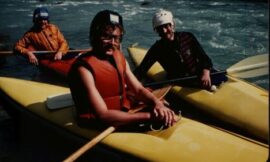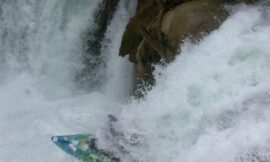“I am a strong believer in outdoor education as it prepares kids for any type of job involving the wilderness and, personal recreational enjoyment, in a place where the majority of the territory is wilderness. Outdoor-ed also gives the non-academic kids a place to shine and a great reason not to become a high school dropout.”
Bob’s words from a letter of support
Bob Daffe is well-known for his contributions to the paddling community, but not everyone may be aware of his huge contribution to outdoor education programs in Yukon schools.
When I first met Bob in August 2008, I was a Cheechako, fresh to the north. A sudden opportunity had become available for me to teach Outdoor Education 10, 11, and the new “GLOBE 11” experiential science program at Vanier Catholic Secondary School. I arrived a week before school started to begin my new job. I quickly learned that I had big shoes to fill.
Outdoor education had a long-standing tradition at Vanier, and it had a lot to do with Bob Daffe. He was committed to supporting the program, long after his children had graduated. In fact, Bob worked with Vanier Outdoor Ed for over 30 years. Bob was passionate about the impact experiences in the outdoors could have on students – all students.
Needless to say, I was very fortunate to have Bob take me under his wing. Within a few weeks of school starting, we carried on the Vanier tradition of the fall canoe trip down the McQuesten River, together with another Yukon legend, Jim Boyd. Former Vanier outdoor Ed instructors Russ Tait and Mike Gallant assured me that I was in good hands, and boy, were they right! I sure miss sitting around the fire with Bob and Jim listening to their stories.
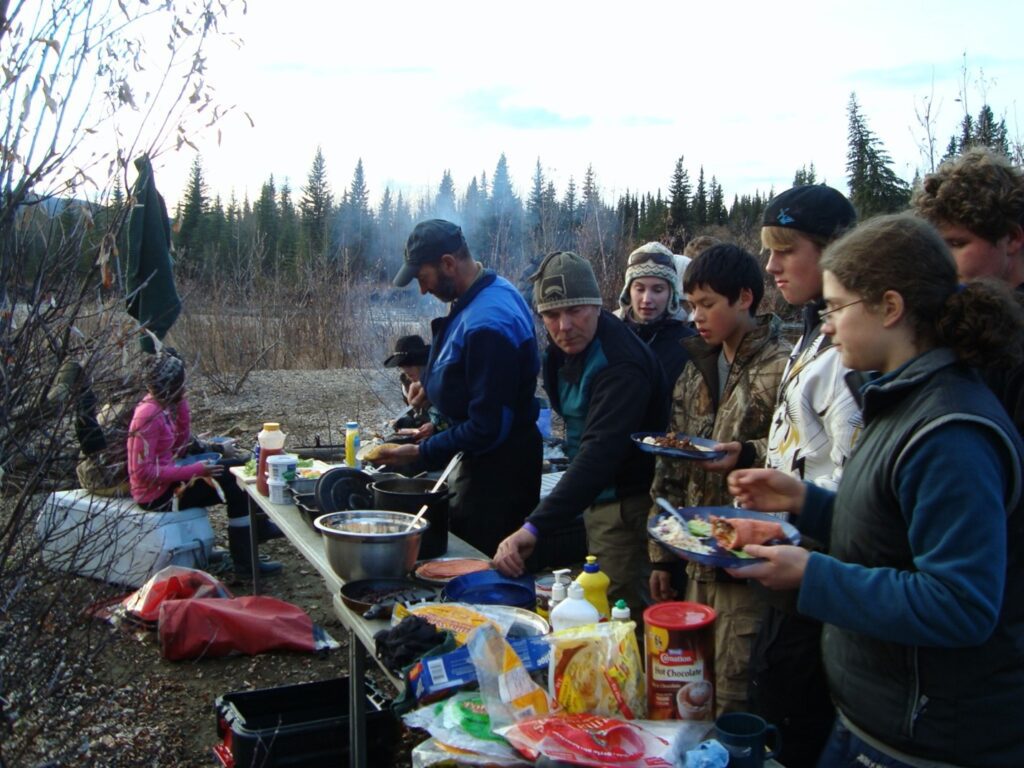
Bob emanated competence in the outdoors. Students were drawn to this and immediately relaxed in his presence. He could sense when students (or leaders) were stressed, and he would quietly go about doing whatever needed to be done… raft up canoes during a wind storm, rescue stranded canoeists on a rock, or simply get the fire started and water boiling (especially when I was pregnant, since “pregnant ladies always need boiling water, right Ms. Darling?”).
Bob did all this while happily whistling a tune.
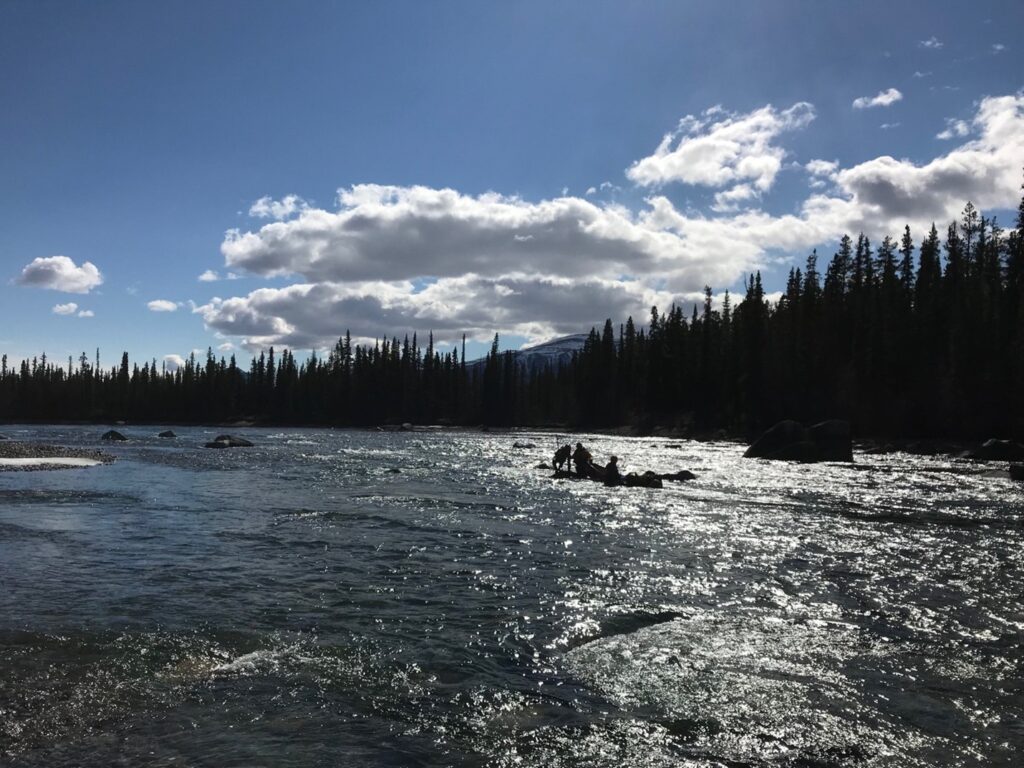
Humour
Grumpy teenagers emerging in the morning from their tents, or straggling into Tat camp cook shack after a sleepless winter survival night could not resist Bob’s good-natured teasing and sense of humour.
“Your hair looks lovely this morning.” Bob would razz. Immediately, a smile would break out on the face of the student.
Beware of the snow snakes
One time, Bob had convinced students that “snow snakes” existed, coming out only by the light of the moon. Students had a huge shock when Bob brought a wooden snake covered in snow into the cook shack, gathered the students, and then dramatically threw the snake up in the air. Squeals all around.
To the nervous teenager
To the nervous teenager frantically blowing his emergency whistle in the middle of the survival night, due to an unknown noise coming from the woods… “Hoo hoo,” Bob teased, imitating an owl call that we had all heard by then, with a terribly frightened look on his face … the teens would go back to surviving the night.
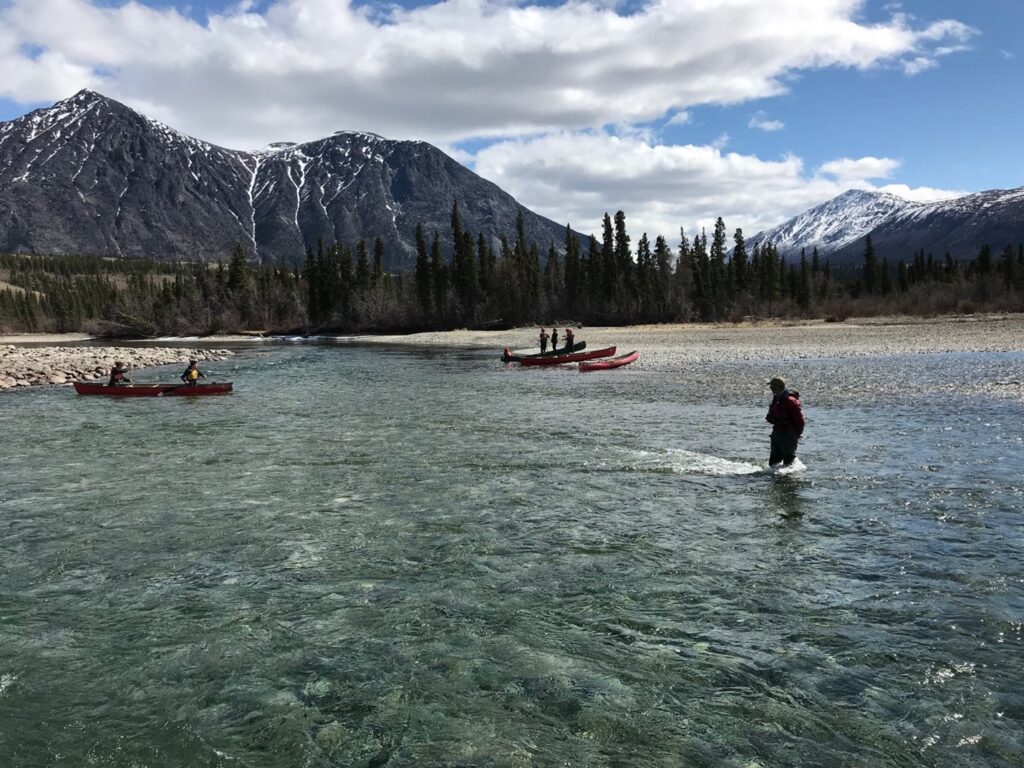
Leadership
Bob had a way of what I would call “leading without leading.” He would generously support me on trips, without needing to take over, as he very well could have. He introduced himself as “Ms. Darling’s safety backup” and let me lead the group, yet be there whenever I needed him and problem-solve together. Bob was a gentleman, a good friend, and the most skilled outdoorsman I know. He also had a practicality that many appreciated…why would you go through the trouble of sawing down a bunch of trees for wall tent poles when there are rafting oars right here we can use?
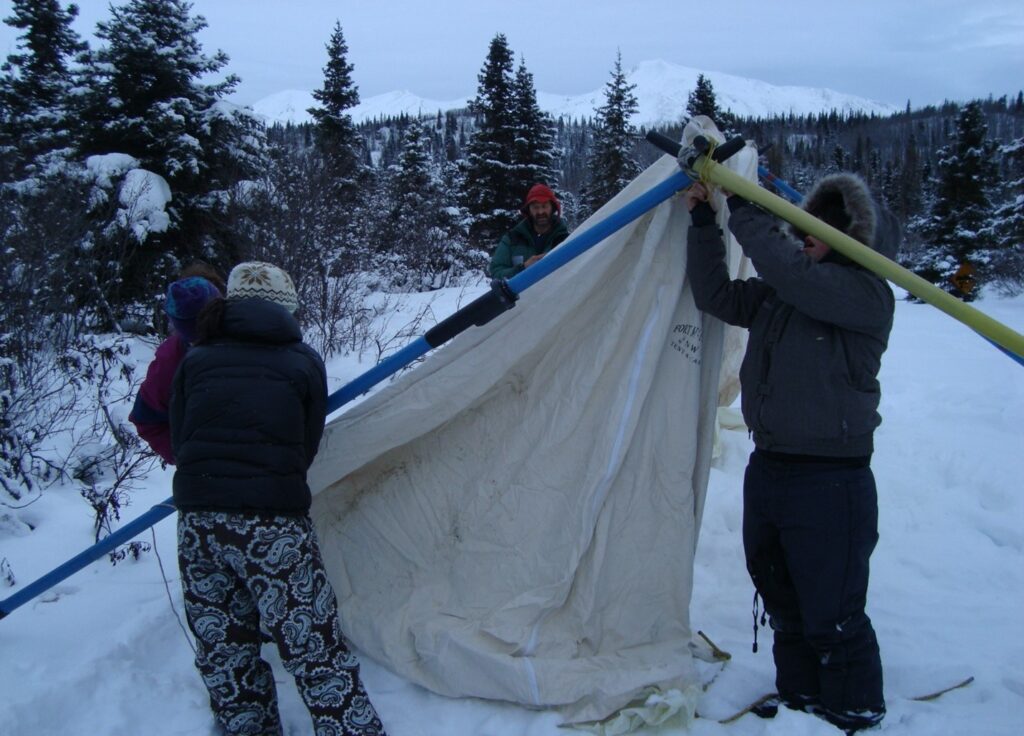
Bob showed students that being in the outdoors does not have to be complicated. The point was to get outside. Be prepared to keep yourself warm, dry, and comfortable. Stay positive and contribute to your group. Make friends. Make your adventure happen.
Trips
Through the years, I could count on Bob’s support on so many different trips, not just at Vanier, but helping me with the SASE 9 program at Porter Creek, as well as the OPES 9 and ACES 10 programs at Wood Street School. Together with students, and with the invaluable contributions of many other skilled outdoor experts, we paddled the McQuesten River, Dezadeash River, Yukon River to Dawson, the Takhini River, including a basecamp hike to the top of Mt Vanier, and of course, rafted the Tatshenshini River. Talk about class bonding.
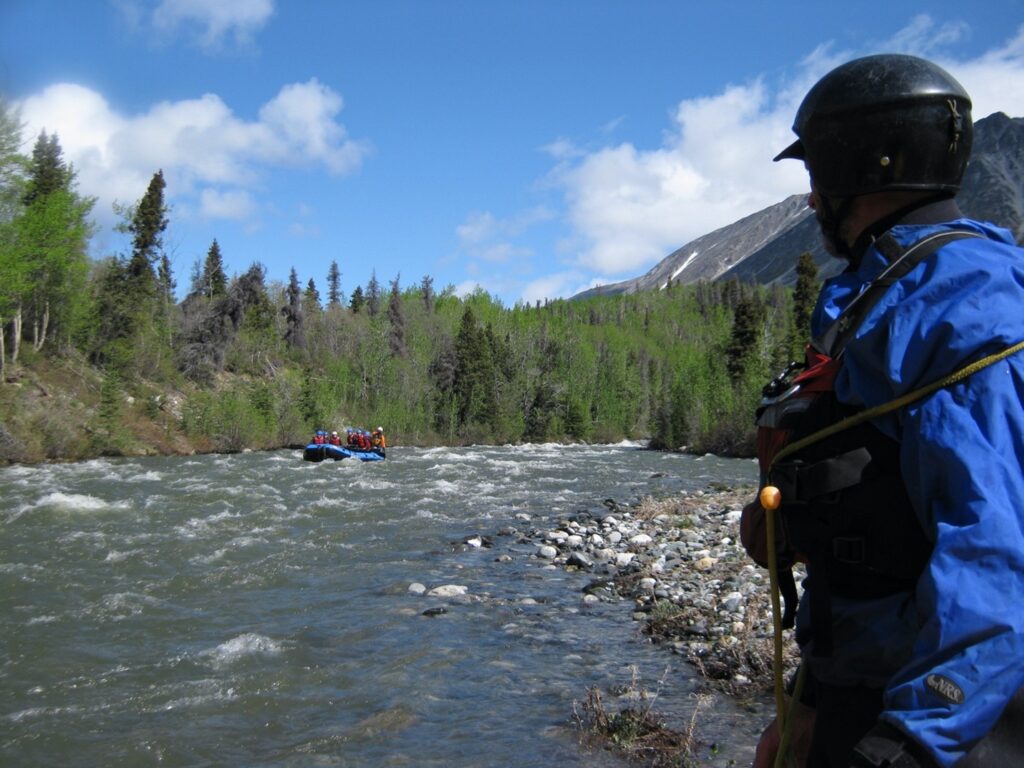
These were not just “Outdoor Ed” trips, but rich experiences integrating all aspects of educational curriculum while focusing on personal and group responsibility. These experiences really broadened my understanding of how exposing children to challenges from Mother Nature in the outdoors can truly be the best classroom.
Besides river trips, we sea kayaked to Davidson Glacier in Haines, Alaska, backpacked throughout Kluane National Park and beyond (we even travelled to the base of the Kaskawulsh Glacier via the Slims River east route and managed to come back with the same number of students at the end, despite being followed by a grizzly bear… and almost losing one kid to the quicksand). We visited 98-year-old Alex Van Bibber on his trapline in Champagne, experimented with scientists at the Kluane Lake Research Centre, and took advantage of being right next to the Blanchard Highway camp – collecting the data from the weather station, and of course, climbing in and out of heavy-duty equipment while learning about Bob’s former occupation working on the Haines highway.
Winter camping
Perhaps most memorable to me will be the winter camping trips. Winter camping at Tat camp with Bob was something special. As on the water, Bob was really in his element in the snow. I learned to love winter camping through Bob.
I believe Bob embraced the charm of Yukon winters similar to the words of Robert Service:
The winter! the brightness that blinds you,
The Spell of the Yukon by Robert W. Service
The white land locked tight as a drum,
The cold fear that follows and finds you,
The silence that bludgeons you dumb.
Bob would often reminisce about the good old days of Vanier outdoor education when it wasn’t just an option for grade 10 and 11, but 8th and 9th graders would have the opportunity to winter camp and learn the importance of hard work and preparation; honing their skills to an expert level by the time they were in the higher grades.
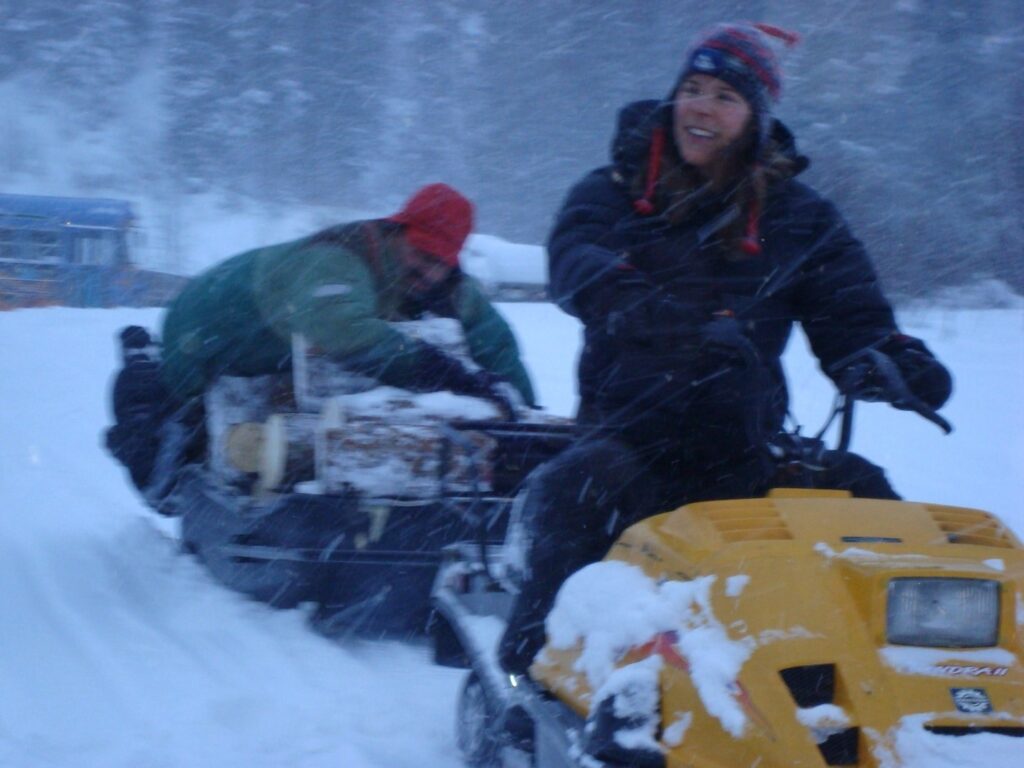
We really had a blast at Tat camp in the winter. Students set up wall tents (sometimes with the raft oars:), built quinzhees and bush shelters. The occasional yellow bus was put to use on nights around -30C. We would often combine Tat camp survival with a survival night in the Haines Pass, skiing in from Chuck Creek, incorporating snow studies and avalanche awareness skills. Students certainly understood quickly that they were on their own to build their snow cave for the night when they observed Bob digging out his simple, tarped snow trench for the night! The cozy snow cave was suddenly worth the effort.
Back to the rivers…
I asked Bob to do his safety talk every time before getting on the river. I looked forward to it, as it would inevitably be the same.
After finding a simple small stick on the ground, roughly resembling a boat, Bob would gather the students by the water’s edge and ask them to observe the stick closely. Bob had that way of speaking that would capture the minds of students… as if the stick were about to do some magical trick.
Forty eyeballs glued to the movements of the stick, wondering what exactly they were to be looking for.
Bob: “What happened to the stick?”
Students: “Um… it floated down the river?”
Bob: “Did you watch it closely? Did you notice how the stick just went wherever the river took it? … That’s Mother Nature. And Mother Nature doesn’t care. It’s up to you to make things happen when you’re on the water. Mother Nature doesn’t care if your mother packed your favourite slippers or snacks. Mother Nature will turn your canoe upside down in a flash if you turn your back on her, and you’re not prepared.”
Bob would then bring the students over to check how they tied their canoes. Tipping upside down a poorly tied canoe, then raising the bow well above the ground, he would shake the canoe energetically while students’ keepsakes tumbled to the ground.
“There goes your favourite slipper down the river! …Uh oh, we have a Cinderella on our hands! Now you’re going to have to tell your parents how you didn’t tie your canoe properly…”
Grin.
Next thing you know, students are madly intent on retying their knots on their canoes.
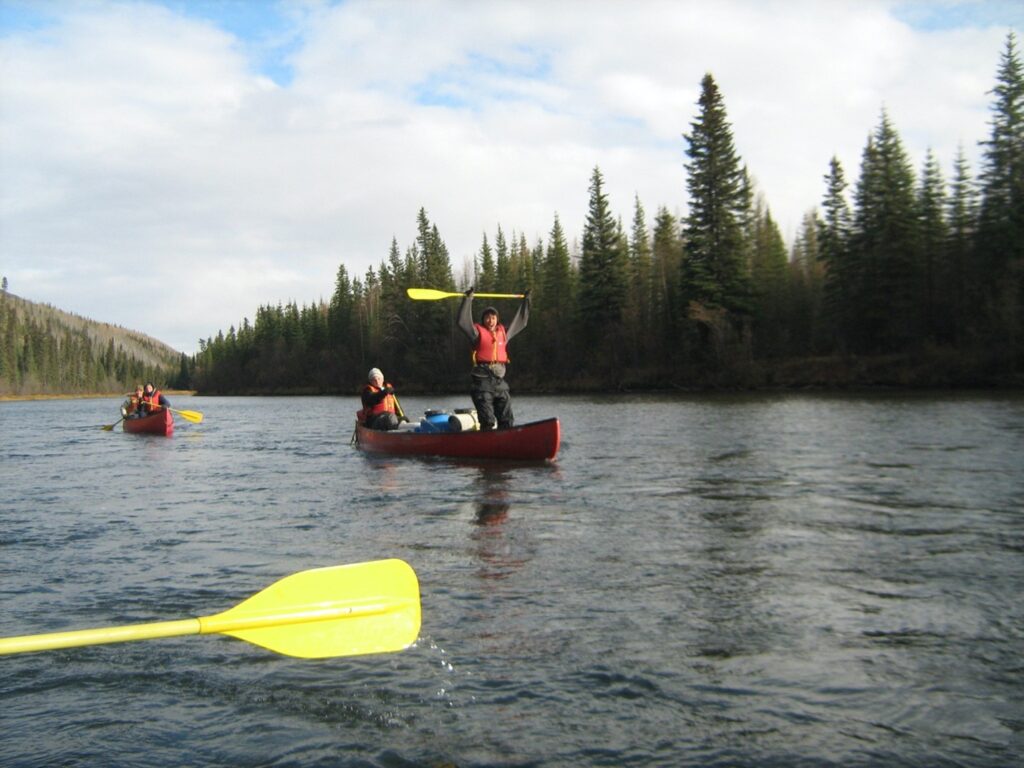
The thing about Bob is that he could talk tough, and say things like, “Our society is raising a generation of wimps!” but time and time again, he would be the first one there to help out any kid having trouble – helping get a canoe pointing downstream, helping the slowest student to dig out a quinzhee – whenever there was a frustrated student, Bob would be there, sitting down next to them, consoling with a simple pep talk.
Risk vs Safety
Bob was indeed my “safety backup.” He was ever prepared for any situation. I trusted Bob’s judgement to know where the limits were between risk and recklessness… and when things were worth it for the pure joy of the experience. (Why not give a serious safety talk, and later encourage students to practice headstands in their canoes?) Students learned to judge where and when fun and games could occur.
Bob strongly believed in pushing people to take risks because he understood that people learn best when they are challenged. He understood the importance of developing a sense of confidence in youth at a critical time in their lives. Countless times I witnessed students accomplishing a goal they hadn’t dreamed they were capable of. The benefits of this kind of teaching are immeasurable.
Why did I do so many trips with Bob? Besides being the best safety backup and mentor I could ever hope for, and a great friend, Bob was a heck of a lot of fun to have around. Bob could certainly say things that as a teacher, I couldn’t. I remember when “medical marijuana” first became legal…
Bob: “Ms. Darling, did you remember to go through the first aid kit with the teenagers? Don’t forget to tell them about the ‘medical marijuana”
Students: Wide eyes.
Bob: Imitates taking a big toke on a joint.
Students: Hysterical laughter.
A final story
On our raft day trip on the Tatshenshini, as we approached the final corner, appropriately named, “Ambush Eddy,” I remember watching with amusement as Bob set up his old trick… the unsuspecting group of students all shuffled like sheep to one side of the raft, while Bob whistled a happy tune… Next thing you know, the raft is flipped upside down and the students are adrift in the water through the last mellow stretch of the river. Bob coolly collected them one by one back into the raft.
Later that night at the ‘circle debrief’ I ask the usual…
“What did you learn from your experience today, ‘Johnny’?”
Student: “Hmmm…I learned that when you see Bob clip into the raft, you’d better be prepared to get wet!”
Yup, with Bob Daffe, you were always in for a lesson from Mother Nature, an adventure for sure, and a memory to treasure for a lifetime.
Thank you, Bob.


